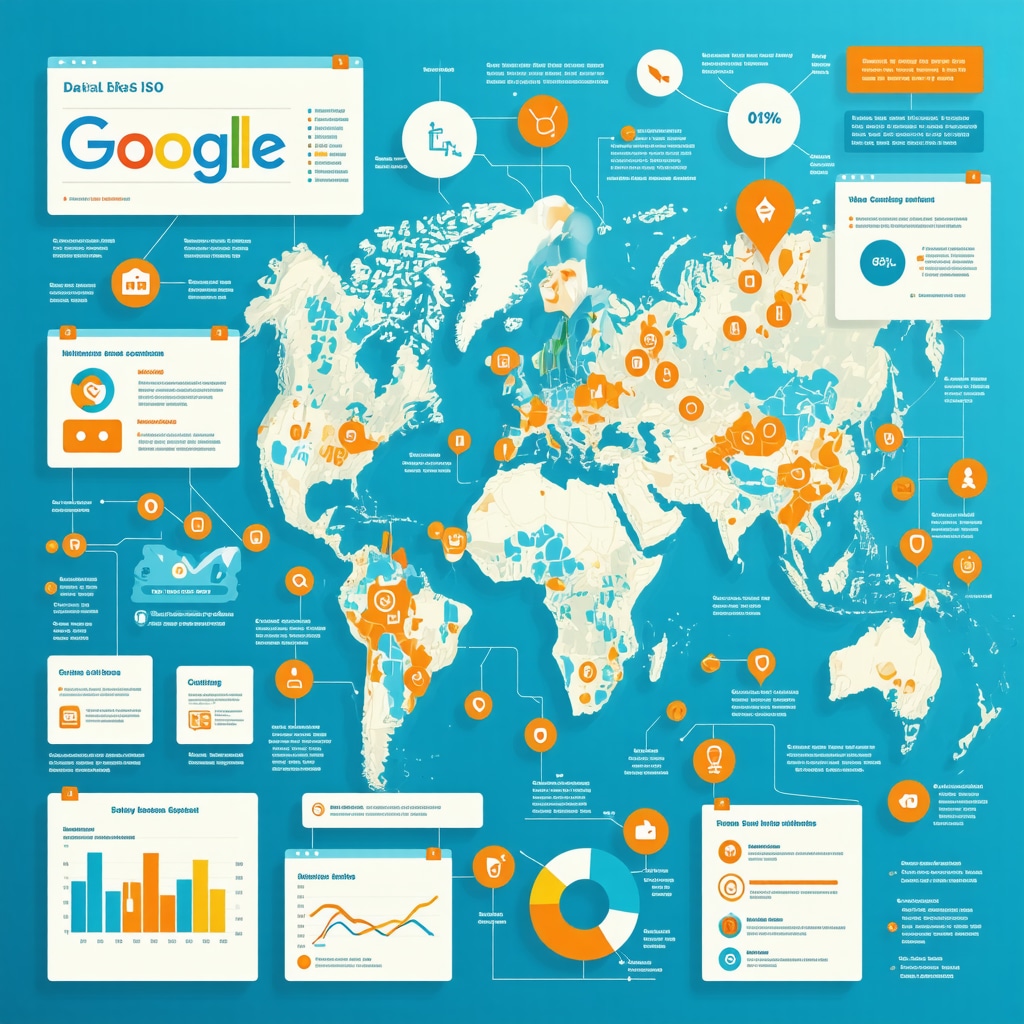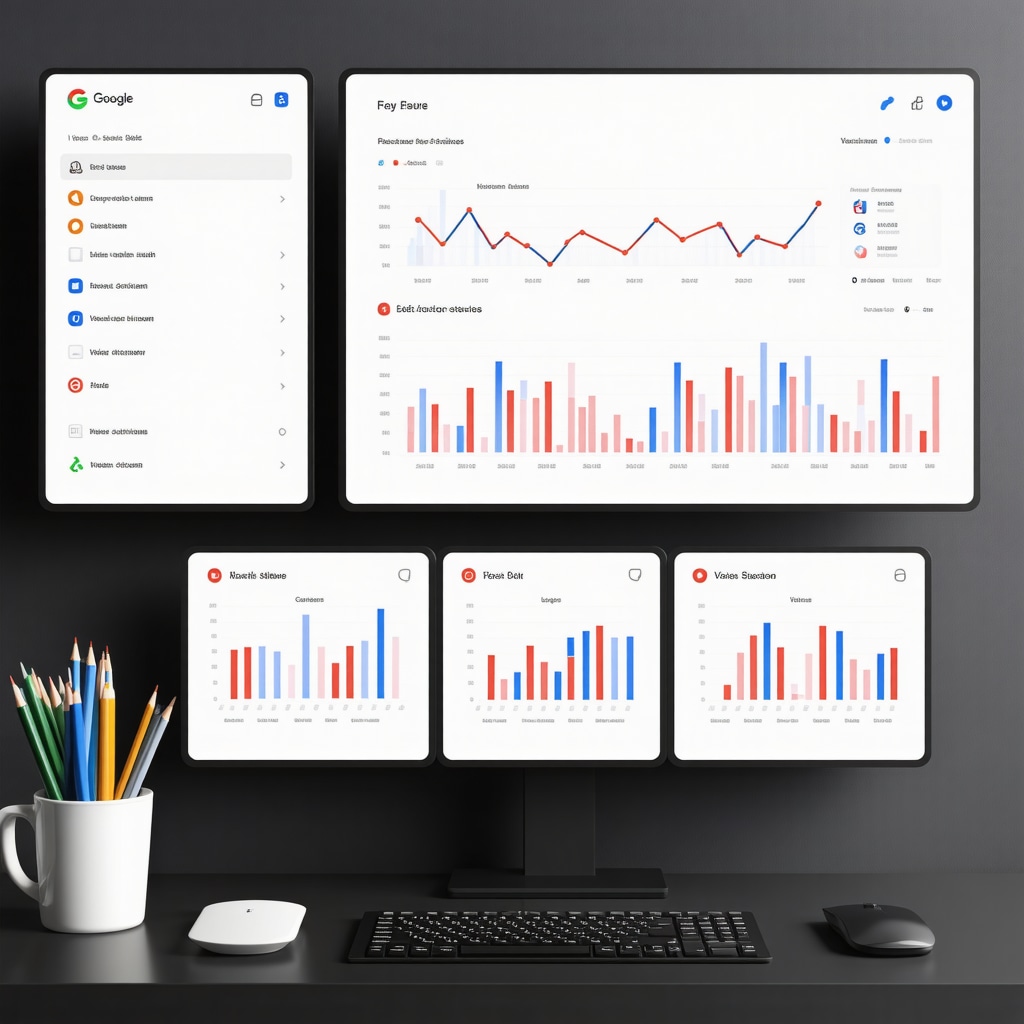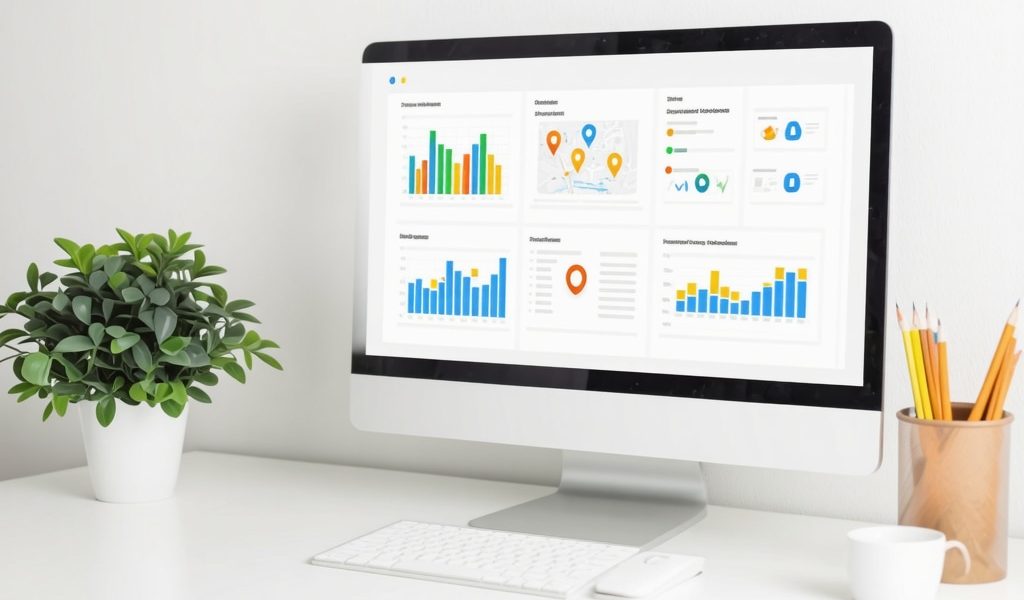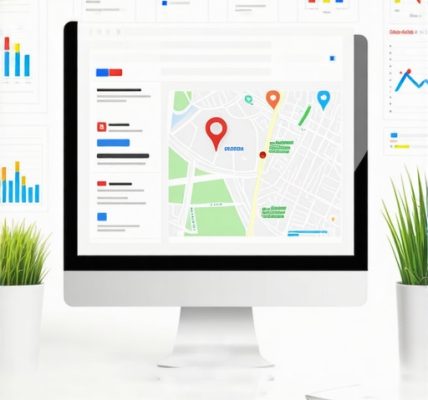Unlocking the Power of GMB Insights: Your Local SEO Compass
Google My Business (GMB) has evolved from a simple directory listing into a strategic powerhouse for local SEO, making it indispensable for businesses aiming to dominate nearby search results. But how do you effectively track your GMB performance to ensure your SEO efforts translate into tangible growth? The answer lies in leveraging GMB’s rich analytics and combining them with smart, data-driven strategies tailored to your unique local market.
Beyond the Basics: Advanced Metrics That Reveal True GMB Impact
While metrics like views and clicks are essential, experienced marketers dig deeper into GMB performance indicators such as customer actions, direction requests, and call tracking. For instance, analyzing the patterns of customer engagement through GMB Insights can reveal which queries drive foot traffic and which posts resonate most with your audience. This granular data allows for precise adjustments in your local SEO tactics, like refining your business description or optimizing for high-intent keywords.
How Can You Use GMB Performance Data to Refine Your SEO Strategy?
Understanding the interplay between GMB analytics and SEO requires a nuanced approach. Start by monitoring your “Queries Used to Find Your Business” report to identify emerging search trends and overlooked keywords. Next, assess your “Customer Actions” metrics—calls, website visits, and direction requests—to determine which touchpoints convert best. Armed with this insight, you can update your Google Business Profile with targeted keywords, fresh posts, and optimized categories, aligning your listing with what prospects truly seek. Leveraging comprehensive guides such as this expert resource on tracking and improving GMB performance can elevate your approach with actionable steps.
Integrating Third-Party Tools: Amplify Your Tracking Accuracy
Relying solely on GMB’s native tools limits your ability to capture the full spectrum of customer interactions. Incorporating third-party analytics platforms, such as Google Analytics integrated with UTM parameters for GMB links, or specialized local SEO software, can provide a holistic view of your traffic sources and conversion paths. These tools enable you to correlate GMB performance metrics with overall website SEO health, revealing how local search visibility influences broader digital engagement.
Real-World Example: Turning Insights into Results
Consider a local coffee shop that noticed a spike in direction requests from a specific neighborhood through GMB Insights. By tailoring their Google Business Profile description and posts to include hyperlocal keywords and promotions for that area, they increased foot traffic by 25% within two months. This real-world application underscores the importance of not just tracking, but actively interpreting and acting on GMB data to improve SEO outcomes.
For businesses eager to dominate local search, mastering these tracking and optimization techniques is crucial. To deepen your expertise, explore this comprehensive guide on mastering Google Business SEO and start transforming data into local growth.
Have insights or questions about boosting your GMB performance? Share your experiences in the comments or connect with us for personalized strategies at our contact page.
Authoritative insights on leveraging Google My Business data are supported by research from Moz’s Local SEO Guide, which details how tracking local search metrics enhances visibility and customer engagement in competitive markets (Moz Local SEO).
Decoding Customer Behavior Through GMB Queries
One of the most eye-opening moments I experienced working with GMB data was realizing how the “Queries Used to Find Your Business” report can uncover hidden customer intents. It’s not just about the obvious keywords like “bakery near me” or “coffee shop downtown.” Sometimes, what’s more telling are the long-tail or niche terms that show up unexpectedly. For example, a boutique I helped noticed searches combining their product type with local landmarks, such as “handmade jewelry near Central Park.” Recognizing these patterns allowed us to tailor their Google Business Profile description and post content with these hyperlocal phrases, which proved to be a game changer for attracting nearby customers.
Why Regular GMB Updates Are Non-Negotiable
From personal experience, keeping your Google Business Profile fresh is more than just good practice — it’s essential for maintaining and improving rankings. Updating photos, posting weekly offers or news, and promptly responding to reviews signals to Google that your business is active and engaged with the community. In fact, according to a Moz Local SEO study, businesses that update their profiles regularly see a significant boost in local search visibility and customer trust. I always encourage clients to schedule a weekly routine for these updates, which can be streamlined using tools or services specializing in weekly GMB posting.
How Can You Consistently Create Engaging Content for Your GMB Profile?
This question often comes up, especially for small business owners juggling many roles. My approach is to think like your customer: what questions do they have, what promotions excite them, and what local events can you tie into? Sharing behind-the-scenes photos, spotlighting team members, or highlighting customer testimonials can create authentic engagement. Plus, leveraging seasonal trends or local happenings can keep your content timely and relevant. If you’re looking for a structured approach, exploring this ultimate guide on weekly GMB posting might spark some ideas.
Tracking Performance: Beyond Just Numbers
Numbers alone don’t tell the full story. It’s about interpreting what those numbers mean in context. For instance, a surge in clicks but no increase in calls or visits could indicate your profile is attracting interest but not converting. That’s when deeper analysis and perhaps a tweak in your call-to-action or business description is needed. Using tools that integrate GMB data with overall website analytics helps link local search results with actual customer behavior. I’ve found that combining GMB Insights with Google Analytics and UTM tracking offers the clearest picture of what’s working and what needs adjustment.
Have You Tried Using GMB Data to Tailor Your Local Marketing Efforts?
Reflecting on your own business or projects, how have you leveraged GMB insights to refine your local SEO or customer engagement? Sometimes the best strategies arise from shared experiences and collaborative learning. I’d love to hear your stories or challenges in the comments below. And if you’re curious about deepening your local SEO expertise, you might find our detailed article on how to track and improve GMB performance metrics insightful.
Remember, local SEO success is a journey—one that thrives on consistent effort and smart use of data. Don’t hesitate to reach out via our contact page if you want personalized assistance tailored to your business’s unique local landscape.
Unveiling the Nuances of Hyperlocal Keyword Optimization Through GMB Queries
Delving deeper into the “Queries Used to Find Your Business” report reveals the intricate tapestry of user intent that often escapes surface-level analysis. Beyond generic keywords, hyperlocal modifiers—such as neighborhood names, landmarks, or even colloquial terms—can illuminate untapped niches. By systematically categorizing these queries and cross-referencing them with geographic data, businesses can craft bespoke content and posts that resonate profoundly with micro-communities.
For instance, an artisanal bakery might discover that searches including terms like “gluten-free treats near Riverside Park” or “artisan bread by the old mill” generate meaningful traffic. Integrating such nuanced phrases into the Google Business Profile’s description, services, and posts not only aligns with user intent but also enhances Google’s understanding of your business relevance in that micro-geography.
What Are the Best Practices for Integrating Long-Tail Hyperlocal Keywords into Your GMB Profile Without Over-Optimization?
Balancing keyword integration with natural readability is paramount to avoid penalties or user disengagement. Experts recommend a strategic layering approach: incorporate primary hyperlocal keywords within the business description, sprinkle secondary terms organically in posts and Q&A sections, and utilize attributes or services fields to support semantic relevance.
Moreover, leveraging user-generated content such as reviews that mention specific locales can reinforce these signals authentically. Encouraging customers to reference precise locations or experiences in their testimonials can create a virtuous cycle of localized relevance that search algorithms reward.
Synergizing GMB Data with Advanced Analytics Platforms for Predictive Local SEO Insights
While GMB Insights offers valuable retrospective data, coupling it with advanced predictive analytics platforms can propel your local SEO strategy into anticipatory territory. Platforms like SEMrush’s Local SEO toolkit or BrightLocal provide sophisticated clustering algorithms and trend analyses that forecast shifts in local search behavior before they fully manifest.
By exporting GMB data into these tools, marketers can identify emerging keywords, seasonal variations, and competitive gaps with greater precision. This foresight enables proactive content planning, promotional calendar alignment, and dynamic profile adjustments that keep your business optimally positioned.
Integrating these insights with CRM data further enriches customer segmentation, allowing for hyper-targeted campaigns that convert GMB-driven traffic into loyal patrons.
Harnessing Visual Content Analytics Within GMB for Enhanced Engagement Metrics
Visual storytelling has emerged as a pivotal element in local SEO success. GMB now supports image engagement metrics that reveal which photos attract the most views and interactions. Analyzing these patterns guides businesses in curating visual content that captivates their audience.
High-quality images showcasing real customer experiences, behind-the-scenes processes, or location-specific events tend to perform exceptionally well. Additionally, optimizing image metadata with descriptive filenames and alt text that include local keywords can bolster SEO signals.
Tools like Google’s Vision AI can assist in auditing visual content for relevance and quality, ensuring your GMB profile remains visually compelling and search-friendly.
For a comprehensive dive into these advanced strategies, explore this expert guide on leveraging GMB insights for hyperlocal SEO.
CTA: Elevate Your Local SEO Mastery with Personalized GMB Analytics Consultation
Ready to transform raw GMB data into laser-focused local marketing strategies? Our team offers tailored consultations that blend cutting-edge analytics with proven optimization techniques. Connect with our experts today and unlock the full potential of your Google Business Profile to outshine competitors in your local market.
Authoritative insights referenced here align with findings from the Search Engine Land article on advanced GMB analytics techniques, underscoring the critical role of granular data interpretation in achieving local SEO excellence.

Unlocking Predictive Potential: Forecasting Local Trends with GMB Data
Beyond real-time insights, Google My Business data can be harnessed for predictive analytics that anticipate local market shifts. By integrating GMB metrics with machine learning models, businesses can forecast peak search periods, optimize promotional timing, and preempt competitive moves. This proactive stance transforms your local SEO from reactive maintenance to strategic foresight, enabling tailored campaigns that resonate ahead of demand curves.
Leveraging Sentiment Analysis on GMB Reviews for Reputation Management
Understanding customer sentiment embedded within GMB reviews provides a nuanced layer of feedback that raw star ratings cannot convey. Advanced natural language processing tools can dissect review content to identify prevailing themes, pain points, and opportunities for service enhancement. By systematically addressing these insights, businesses not only elevate customer satisfaction but also enrich their GMB profile’s trust signals, thereby improving search rankings.
How Can Advanced Sentiment Analysis on GMB Reviews Enhance Local SEO Strategies?
Employing sentiment analysis allows businesses to prioritize responses and tailor content that addresses specific customer concerns or praises, fostering deeper engagement. For example, if multiple reviews highlight exceptional parking convenience, emphasizing this feature in your profile and posts can attract similar customers. This targeted refinement based on authentic feedback can improve click-through rates and conversion metrics. For a deep dive into sentiment analysis applications in local SEO, Search Engine Journal’s expert article offers comprehensive methodologies.
Mitigating Data Noise: Ensuring Accuracy in GMB Performance Interpretation
One challenge seasoned marketers face with GMB data is filtering out anomalies and data noise that can skew interpretations. Factors such as bot traffic, duplicate queries, or seasonal anomalies require careful identification and exclusion to maintain data integrity. Implementing advanced filtering algorithms or cross-validating with CRM and POS systems ensures that performance analyses reflect genuine customer behavior, thereby guiding more effective SEO adjustments.
Customizing GMB Attributes to Reflect Unique Business Offerings
GMB’s attribute fields offer a nuanced avenue to showcase unique selling points that differentiate your business locally. By meticulously selecting and updating attributes—ranging from accessibility options to payment methods and service highlights—businesses can better match user preferences and search filters. This level of customization not only improves discoverability but also enhances user experience by setting clear expectations.
Integrating Voice Search Optimization With GMB Insights
With voice-activated search devices becoming ubiquitous, optimizing your GMB profile for conversational queries is an emerging frontier. Analyzing GMB query data for natural language patterns and question-based searches enables businesses to tailor content that aligns with voice search behavior. Incorporating FAQ posts and leveraging GMB’s Q&A section with structured, voice-friendly responses can significantly boost visibility in voice search results.
CTA: Propel Your Local SEO Forward with Expert GMB Analytics Integration
Unlock unparalleled local search performance by integrating these advanced GMB analytics strategies into your SEO framework. Contact our team of specialists today to receive a bespoke consultation tailored to transform your Google Business Profile into a predictive, sentiment-aware, and voice-optimized local marketing asset.
These insights are corroborated by detailed analyses from Search Engine Land, underscoring the critical role of sophisticated data interpretation in mastering local SEO.

Frequently Asked Questions (FAQ)
What are the most important Google My Business metrics to track for local SEO?
Key metrics include “Queries Used to Find Your Business,” customer actions like calls, website visits, and direction requests, as well as photo views and engagement. These indicators reveal how customers discover and interact with your profile, enabling targeted optimizations that improve local search rankings and conversions.
How can I avoid over-optimization when incorporating hyperlocal keywords in my GMB profile?
Maintain a natural tone by integrating primary hyperlocal keywords in your business description and sprinkling secondary terms organically across posts, Q&A sections, and attribute fields. Prioritize readability and user experience while leveraging customer reviews that authentically mention local landmarks or neighborhoods to reinforce relevance.
Why is regularly updating my Google Business Profile crucial for SEO?
Frequent updates signal to Google that your business is active and engaged. Posting fresh content, updating photos, and responding promptly to reviews can boost local search visibility, increase customer trust, and enhance your profile’s ranking potential.
How can third-party tools enhance GMB performance tracking?
Third-party platforms, such as Google Analytics with UTM parameters or specialized local SEO software, provide a comprehensive view by correlating GMB data with website traffic and conversions. This holistic insight helps identify which GMB activities drive meaningful engagement and where improvements are needed.
What role does sentiment analysis of GMB reviews play in reputation management?
Sentiment analysis deciphers nuanced customer feedback beyond star ratings, highlighting strengths and pain points. Businesses can prioritize responses and tailor marketing to address specific issues or emphasize praised features, enhancing reputation and boosting SEO signals.
How can GMB data be used for predictive local SEO strategies?
By integrating GMB metrics with predictive analytics tools, businesses can forecast search trends, anticipate peak demand periods, and identify competitive gaps. This foresight enables proactive content planning and promotional timing, positioning your business advantageously ahead of market shifts.
Is optimizing for voice search important in GMB strategy?
Absolutely. Analyzing GMB query data for natural language and question-based searches allows you to tailor your profile content for voice assistants. Utilizing the Q&A section and FAQ posts with conversational phrasing improves your chances of appearing in voice search results.
How do I handle data noise and anomalies in GMB analytics?
Filtering out irrelevant data such as bot traffic or duplicate queries is essential. Cross-validating GMB data with CRM or POS systems and applying advanced filtering algorithms ensures your insights reflect genuine customer behavior, leading to more accurate decision-making.
Can visual content analytics impact my GMB profile’s performance?
Yes. Monitoring which photos attract the most views and interactions helps you curate compelling visual content that resonates with your audience. Optimizing image metadata with local keywords further strengthens your SEO signals and engagement.
How can I consistently create engaging content for my GMB profile?
Think from your customers’ perspective: share promotions, behind-the-scenes glimpses, team spotlights, and local event tie-ins. Leveraging seasonal trends and authentic testimonials keeps your content relevant and appealing. Structured posting schedules or professional services can assist in maintaining consistency.
Trusted External Sources
- Moz Local SEO Guide – Offers comprehensive strategies and data-driven insights on local SEO best practices, including Google My Business optimization and review management.
- Search Engine Land: Advanced Google My Business Analytics Techniques – Provides in-depth analysis of granular GMB data interpretation and advanced tracking methodologies crucial for expert local SEO.
- Search Engine Journal: Using Sentiment Analysis for Local SEO – Explores the application of natural language processing on customer reviews to enhance reputation management and search rankings.
- BrightLocal Local SEO Toolkit – Delivers sophisticated local search analytics, competitive benchmarking, and predictive trend data to empower proactive SEO strategies.
- Google’s Official My Business Help Center and Insights Documentation – Authoritative resource for understanding native GMB features, metrics, and optimization guidelines directly from the platform provider.
Conclusion
Mastering Google My Business insights is a cornerstone of effective local SEO, transforming raw data into actionable strategies that drive visibility, engagement, and conversions. By delving beyond surface metrics and integrating advanced analytics, sentiment analysis, and hyperlocal keyword optimization, businesses can tailor their profiles to resonate deeply with their target communities. Regular updates, thoughtful content creation, and leveraging third-party tools further enhance your competitive edge in local search landscapes. Embracing predictive analytics and voice search optimization ensures your approach remains future-proof and strategically agile.
Empower your local SEO journey by applying these expert techniques and continuously refining your Google Business Profile based on insightful data interpretation. Share your experiences, ask questions, and explore our related expert content to unlock your full local market potential.




I really appreciated the section on digging into “Queries Used to Find Your Business”—that tactic changed things for my small cafe. We started tagging every GMB post and link with UTM parameters so we could see which specific posts drove website actions versus just profile views. That helped reveal a surprising pattern: weekend brunch posts generated far more direction requests, while weekday discount posts drove phone calls. To reduce data noise I cross-checked direction requests and calls against POS receipts and our reservation CRM—this filtered out a handful of phantom clicks and gave a truer conversion rate.
A practical tip that worked for us: encourage reviewers to mention neighborhoods or nearby landmarks (we did this politely on receipts) and then surface those phrases in short GMB posts and FAQ entries for voice search. We also experiment with two photo styles and track which gets more engagement rather than guessing.
Curious—how do others validate GMB query accuracy or manage a weekly posting cadence? Any favorite lightweight tools or templates you’d recommend for UTM naming conventions?